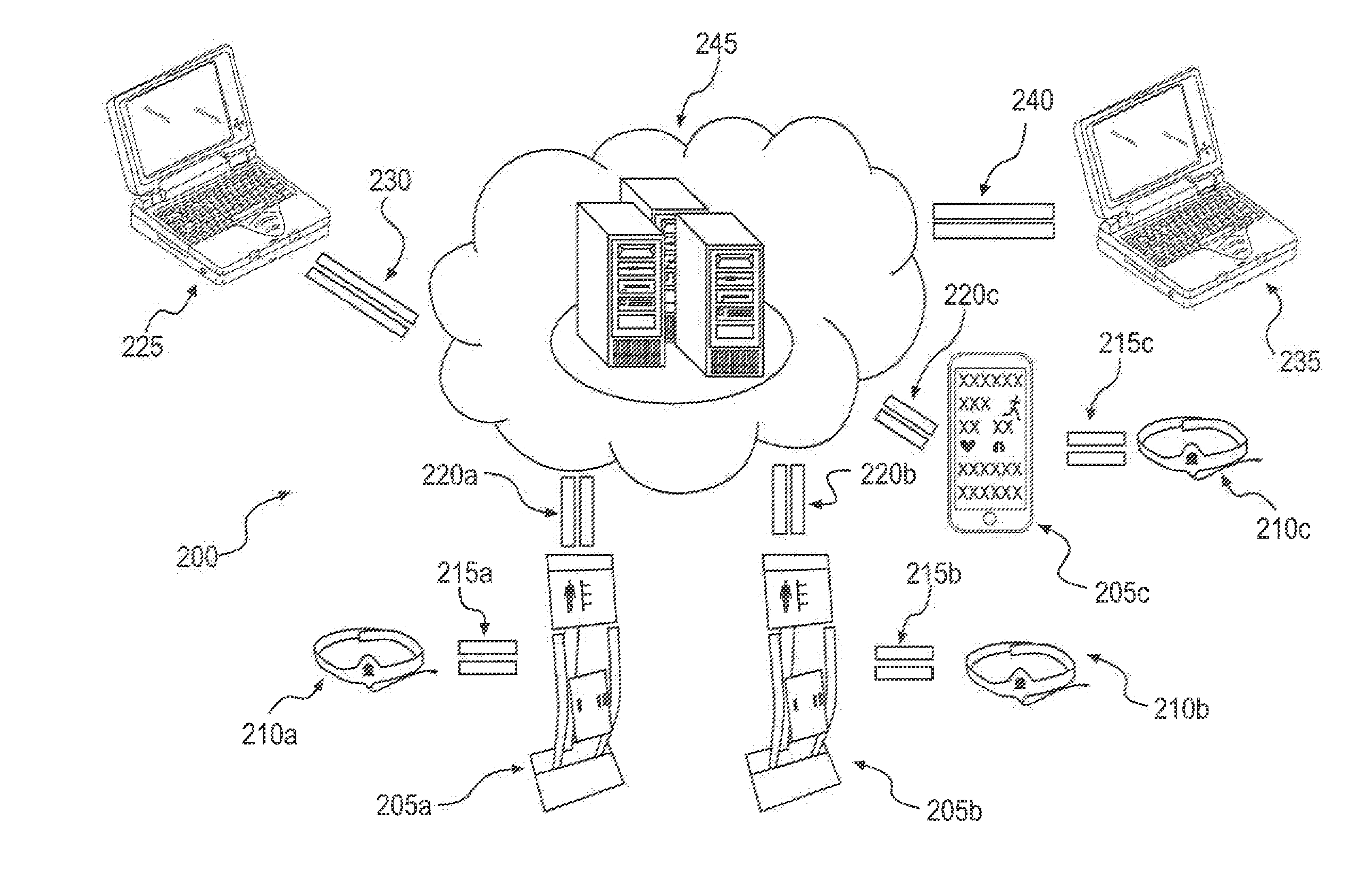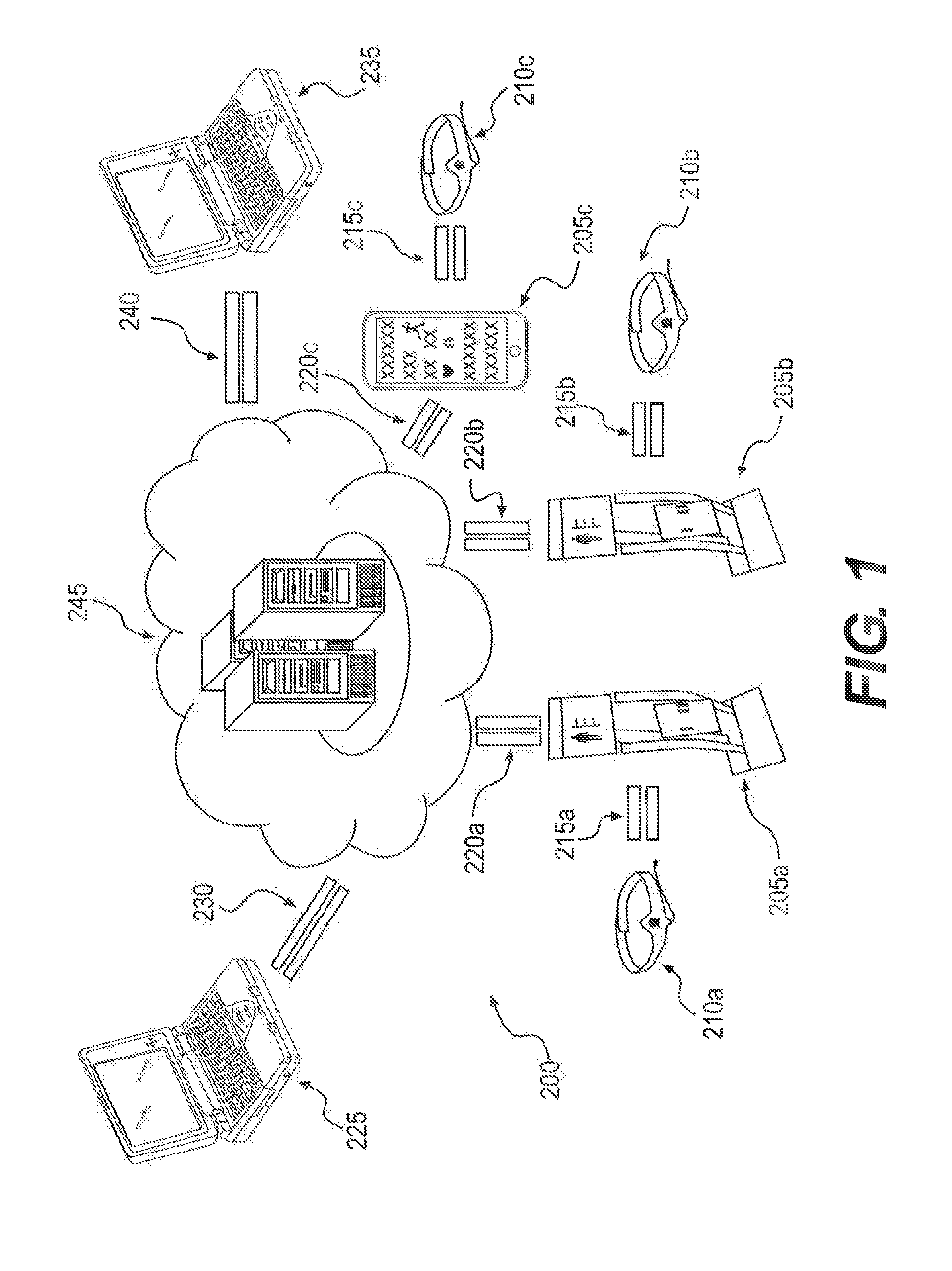Method and System for Gathering and Computing an Audience's Neurologically-Based Reactions in a Distributed Framework Involving Remote Storage and Computing
a distributed framework and audience technology, applied in the field of systems and methods for measuring biologically and behaviorally based responses to content, can solve the problems of low compliance, high error prone non-biologically based self-reporting methods of measuring audience response, and recall bias
- Summary
- Abstract
- Description
- Claims
- Application Information
AI Technical Summary
Benefits of technology
Problems solved by technology
Method used
Image
Examples
example 1
[0105]The following examples are provided to illustrate an embodiment of the system and method of the present invention. The example is intended to be merely illustrative, and does not limit the scope of the claims to the embodiment presented in the example.
[0106]A kiosk is equipped with several components including biologically based sensors, cameras, computer system, touch screen, mouse, LCD display, GPS device, and wireless internet connection. All of the components are connected to the computer system. The sensors are housed within an arm band.
[0107]A movie production company desires to test a portion of two new movies in an effort to determine whether the movies will be successful, and what response the audience will have to two different version of the movie trailer. The kiosk is placed in a movie theatre lobby. The movie company is particularly interested in the response of females ages 18-34 for the first movie. The first movie clip is received by the kiosk via the wireless ...
example 2
[0111]Several kiosks described above in Example 1 are deployed in various locations throughout the country. A movie production company desires to test a portion of two new movies in an effort to determine whether the movies will be successful, and what response the audience will have to the portion of the movies. The kiosks are placed in a movie theatre lobbies across the country.
[0112]As in the first example, members of the public approach the kiosk (or are recruited by a kiosk manager), and are prompted to enter their age, gender, and various other demographics using the touch screen. The audience members are then prompted to attach the arm band and are shown the movie clip on the LCD display.
[0113]The movie production company is particularly interested in determining interest in the movie clip from participants within a 90 mile radius of Atlanta, Ga.
[0114]The system aggregates the demographic data as well as the overall number of participants. In addition, using the location info...
example 3
[0116]Several kiosks described above in Example 1 are deployed in various locations (such as movie theatre lobbies and malls) throughout the country and around the world. A movie production company desires to test two or more versions of a movie trailer in these locations to determine which version of the trailer will be most successful in each specific location.
[0117]As in the first and second examples, members of the public approach the kiosk (or are recruited by a kiosk manager), and are prompted to enter their age, gender, and various other demographics using the touch screen. The audience members are then prompted to attach the arm band and are shown the movie clip on the LCD display.
[0118]The system aggregates the demographic data as well as the overall number of participants. In addition, using the location information, which may be provided by a GPS device, the computer system will determine which version is successful in each location. The system generates a report of the a...
PUM
 Login to View More
Login to View More Abstract
Description
Claims
Application Information
 Login to View More
Login to View More - R&D
- Intellectual Property
- Life Sciences
- Materials
- Tech Scout
- Unparalleled Data Quality
- Higher Quality Content
- 60% Fewer Hallucinations
Browse by: Latest US Patents, China's latest patents, Technical Efficacy Thesaurus, Application Domain, Technology Topic, Popular Technical Reports.
© 2025 PatSnap. All rights reserved.Legal|Privacy policy|Modern Slavery Act Transparency Statement|Sitemap|About US| Contact US: help@patsnap.com



